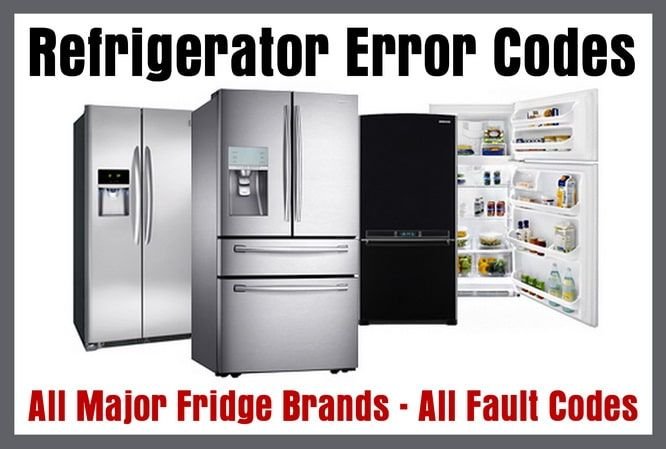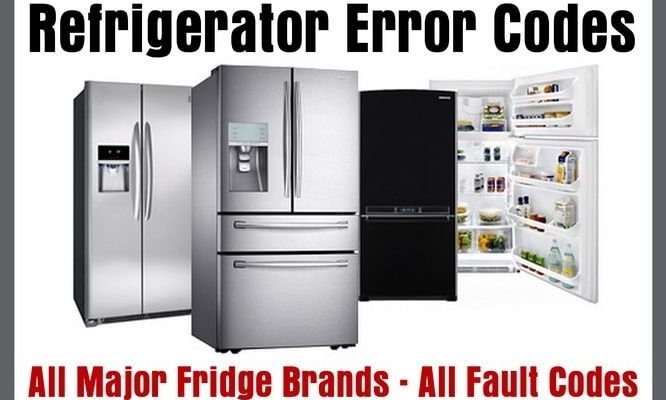
Picture this: your refrigerator, like a well-oiled machine, relies on various components working in harmony to keep your food fresh and your beverages cool. When something goes awry, your smart appliance tries to communicate the problem through an error code. In the case of GE refrigerators, the error code E3 specifically relates to a defrost sensor problem. It’s essentially your fridge’s gentle nudge to let you know there’s a hiccup in maintaining that perfect chill. So, if you’re scratching your head and wondering what to do next, you’ve come to the right place.
Understanding the Error Code E3
The error code E3 is more than just an arbitrary combination of characters—it serves as a specific indicator of what’s happening inside your refrigerator. In simple terms, when you see E3 on the display, it means the defrost sensor is acting up or has failed. Imagine it like this: your fridge has a built-in thermometer designed to regulate the cooling process. If this thermometer, or sensor, stops working correctly, it throws everything off balance, much like if your car’s fuel gauge suddenly stopped reading accurately.
The defrost sensor plays a crucial role in maintaining the efficiency of your refrigerator. Its primary job is to monitor the evaporator coils to prevent them from becoming encased in ice. When the defrost sensor malfunctions, it affects the appliance’s ability to defrost properly, leading to a gradual buildup of frost. Over time, this can result in your refrigerator working harder to maintain cool temperatures, which might make it less energy-efficient.
You might be wondering why your fridge needs to defrost anyway. Well, during regular operation, moisture inside can freeze and form frost over the coils. If left unchecked, this frost can block airflow, reducing the fridge’s overall cooling capability. By signaling an E3 error, your GE refrigerator is highlighting a potential disruption in this delicate dance of keeping frost at bay. So, while it might seem like a hassle, this warning is actually doing you a favor by prompting a timely intervention.
Common Causes of Error Code E3
Now that you know what the E3 error means, you might be curious about what causes this issue in the first place. Several factors could lead to your fridge displaying this error message, and understanding them can be the key to resolving the issue effectively. One of the most common culprits is a faulty defrost sensor, which might have stopped working due to age, wear, or unforeseen damage. Think of it like a light bulb that eventually burns out—you rely on it day in and day out until, one day, it just gives up.
Another possible cause could be wiring issues or loose connections. Imagine trying to listen to your favorite song, but every so often, the sound cuts out because the wires in your headphones are frayed. Similarly, if the electrical connections to the defrost sensor are compromised, it can trigger the E3 error. This might occur due to frequent door openings, which cause wires to become loose over time, or due to vibrations from regular fridge operations.
Lastly, consider the possibility of a malfunctioning control board. The control board is like your refrigerator’s brain, processing information from various components to ensure smooth operation. If it starts malfunctioning, it might misinterpret signals from the defrost sensor, resulting in an E3 error even if the sensor itself is fine. This situation is akin to your brain miscommunicating signals to your hand, causing you to drop something even though your muscles are perfectly capable of holding it.
Steps to Resolve the E3 Error
So, what should you do when faced with an E3 error code on your GE refrigerator? The first step is to remain calm and remember that troubleshooting doesn’t have to be daunting. For starters, a simple reset might do the trick. Try unplugging your refrigerator for about five minutes. This process is like rebooting your computer—it gives the appliance a chance to clear temporary glitches.
If resetting doesn’t solve the problem, it might be time to take a closer look at the defrost sensor. While it’s not recommended for beginners to tinker with internal components, you can visually inspect the area for any obvious signs of damage or disconnection. Sometimes, simply reconnecting a loose wire can resolve the issue. However, if you’re not comfortable with this, it’s best to call a professional technician who can diagnose and fix the problem safely.
In cases where the defrost sensor or wiring isn’t the issue, the control board might need evaluation. Replacing or repairing a control board is a more complex task best left to professionals. But rest assured, a qualified technician can identify the underlying issue and restore your refrigerator to optimal working condition in no time. Remember, it’s always better to seek expert help than risk causing further damage.
Preventing Future Error Codes
Of course, prevention is always better than cure. To avoid facing the E3 error in the future, regular maintenance of your refrigerator is key. Just as you’d service your car to keep it running smoothly, a little TLC for your fridge can go a long way. Start by cleaning the coils periodically, as this enhances airflow and reduces the chances of frost buildup. Think of it as dusting off cobwebs—it keeps things running tidily and without obstruction.
Additionally, be mindful of how often you open the fridge doors. Each time the door is opened, warm air enters, and the appliance has to work harder to maintain its set temperature. Over time, this can stress internal components. Aim to keep the door open only as long as necessary, much like how you’d prevent energy waste by not leaving the lights on in an empty room.
Lastly, consider having a professional technician perform an annual check-up. They can spot potential issues before they turn into actual problems, much like a routine dental check-up. By catching these issues early, you ensure your refrigerator continues to operate efficiently without surprise interruptions. Regular care and attention not only extend the life of your appliance but also give you peace of mind.
By understanding what the GE refrigerator error code E3 means and familiarizing yourself with common causes and preventative measures, you’re better equipped to handle this situation with confidence. Remember, your fridge is designed to keep things cool—not your patience on edge. With the right approach, you can keep everything running smoothly and avoid any unnecessary hassle.
